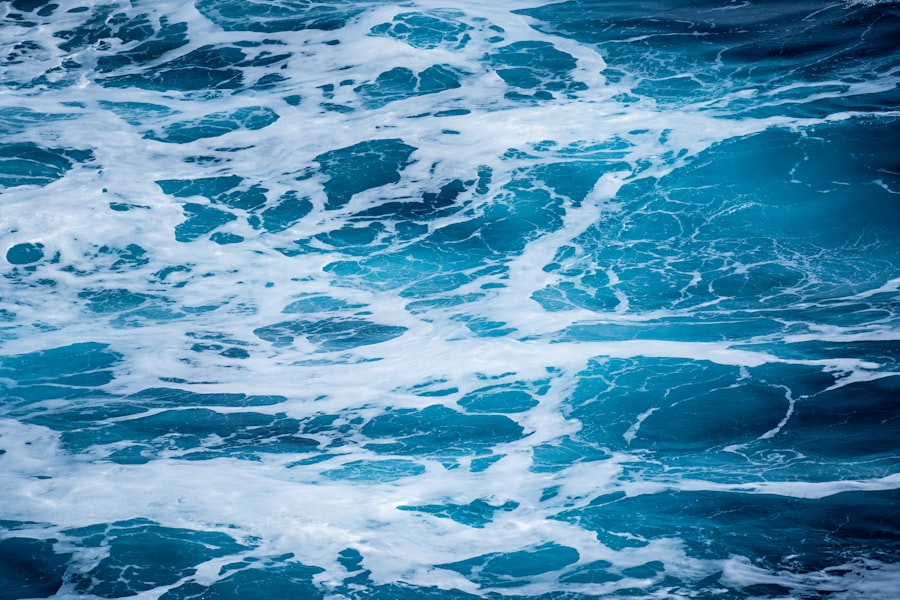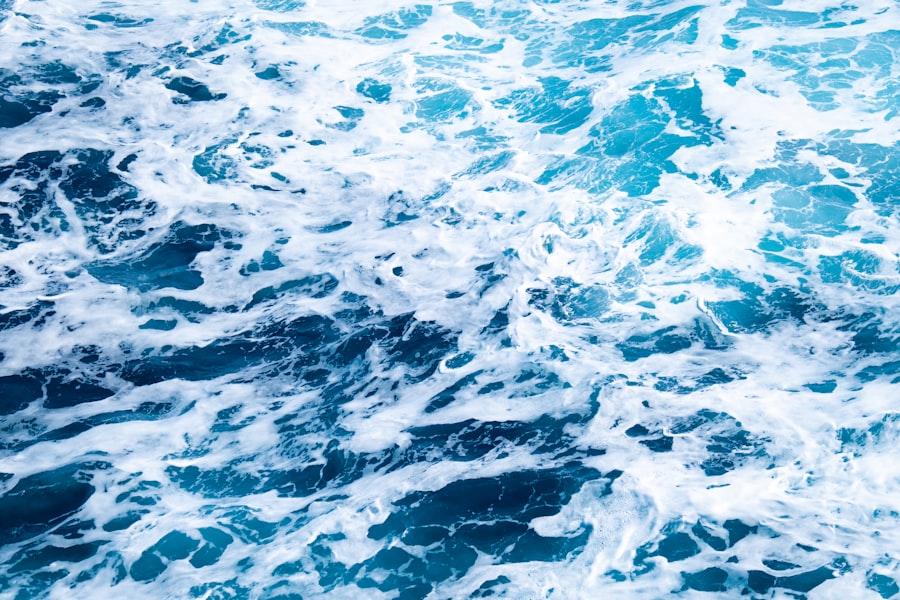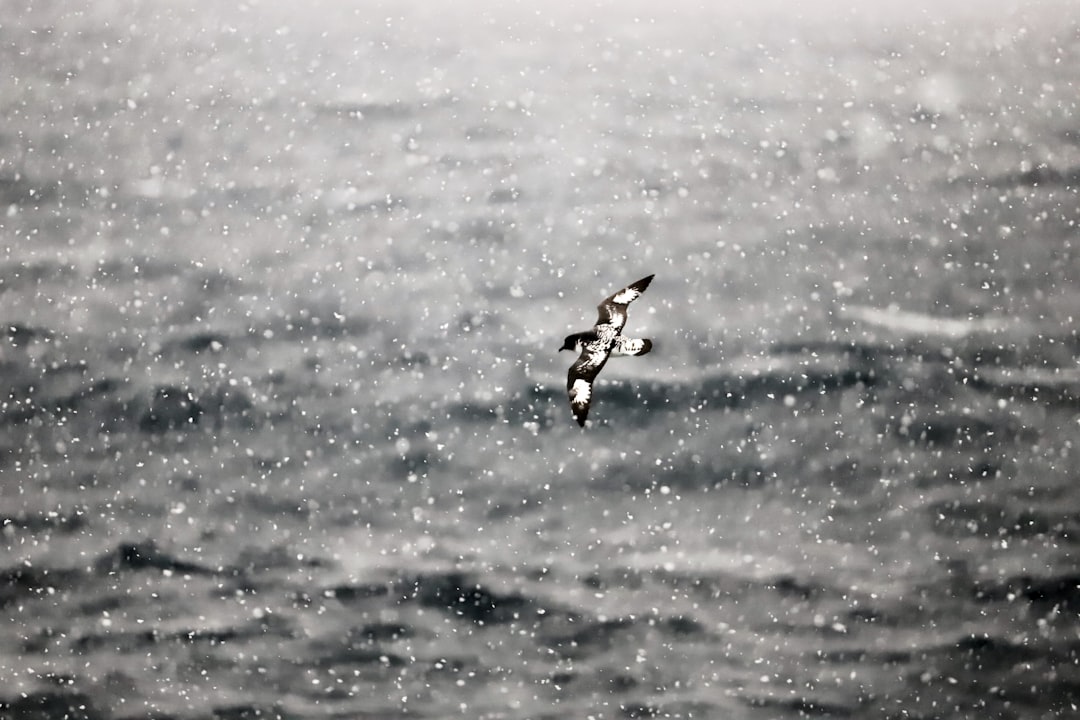The Drake Passage, a body of water situated between the southern tip of South America and Antarctica, is renowned for its tumultuous seas and breathtaking vistas. This narrow stretch of ocean, measuring approximately 800 kilometers (500 miles) wide, serves as a critical conduit for maritime traffic between the Atlantic and Pacific Oceans. Its unique geographical position not only makes it a vital route for shipping but also a focal point for scientific research and exploration.
The passage is often characterized by its unpredictable weather patterns and rough seas, which have earned it a reputation as one of the most challenging maritime routes in the world. The allure of the Drake Passage extends beyond its navigational significance; it is also steeped in a rich tapestry of history and adventure. For centuries, explorers and sailors have been drawn to its waters, seeking both fortune and knowledge.
The passage is not merely a geographical feature; it embodies the spirit of exploration and the quest for understanding the natural world. As travelers embark on journeys through this formidable stretch of ocean, they are often met with a sense of awe and respect for the power of nature that defines the Drake Passage.
Key Takeaways
- The Drake Passage is a body of water between South America’s Cape Horn and the South Shetland Islands of Antarctica, known for its turbulent seas and challenging conditions.
- The Drake Passage has a rich historical significance as the route taken by famous explorers such as Sir Francis Drake and Charles Darwin, and has been a key passage for trade and exploration for centuries.
- The weather and climate in the Drake Passage are characterized by strong winds, rough seas, and rapidly changing conditions, making it one of the most challenging maritime environments in the world.
- The Drake Passage is home to a diverse range of wildlife, including penguins, seals, and whales, and offers stunning natural attractions such as icebergs and dramatic landscapes.
- Navigating the Drake Passage presents significant challenges, including unpredictable weather and treacherous seas, requiring careful planning and adherence to safety precautions.
Historical significance of the Drake Passage
The historical significance of the Drake Passage cannot be overstated. Named after the English explorer Sir Francis Drake, who navigated these waters in the late 16th century, the passage has played a pivotal role in maritime history. Drake’s expedition was one of the first to circumnavigate the globe, and his journey through these treacherous waters opened new avenues for exploration and trade.
The passage became a crucial route for whalers, sealers, and later, scientific expeditions, all of whom sought to exploit the rich resources of the Southern Ocean. In addition to its role in exploration, the Drake Passage has also been a site of conflict and competition among nations. The quest for territorial claims and access to resources has led to numerous confrontations over the centuries.
The passage’s strategic importance was highlighted during the Age of Discovery, as European powers vied for dominance in global trade routes. Today, it remains a focal point for discussions surrounding environmental conservation and sustainable practices, as nations recognize the need to protect this unique marine ecosystem while balancing economic interests.
Weather and climate in the Drake Passage

The weather and climate in the Drake Passage are notoriously unpredictable, contributing to its reputation as one of the most challenging maritime environments. The passage is influenced by a variety of climatic factors, including the confluence of warm and cold ocean currents, which can lead to sudden changes in weather conditions. Sailors navigating these waters must be prepared for everything from calm seas to violent storms, often within a matter of hours.
The region experiences strong winds, particularly during the winter months, which can create hazardous conditions for vessels. Temperature variations are also significant in the Drake Passage. The waters can be frigid, with temperatures often hovering around freezing, especially during the winter months.
This cold climate supports a unique ecosystem that thrives in harsh conditions but poses challenges for those attempting to traverse the passage. Understanding these weather patterns is crucial for anyone planning a journey through this formidable stretch of ocean, as they can greatly impact safety and navigation.
Wildlife and natural attractions in the Drake Passage
| Wildlife and Natural Attractions in the Drake Passage |
|---|
| 1. Penguins |
| 2. Whales |
| 3. Seals |
| 4. Albatrosses |
| 5. Icebergs |
| 6. Glaciers |
The Drake Passage is not only known for its challenging conditions but also for its rich biodiversity and stunning natural attractions. The waters are teeming with marine life, including various species of whales, seals, and seabirds. Among the most notable inhabitants are humpback whales, orcas, and blue whales, which can often be spotted during migration seasons.
The passage serves as an essential feeding ground for these majestic creatures, drawing wildlife enthusiasts and researchers alike. In addition to marine life, the surrounding landscapes are equally captivating. The rugged coastlines of Antarctica are dotted with towering icebergs and glaciers that create a breathtaking backdrop for any journey through the passage.
The stark beauty of this remote region is a significant draw for adventurers seeking to experience nature in its most unspoiled form. The combination of wildlife and dramatic scenery makes the Drake Passage a unique destination for those looking to connect with the natural world.
Navigational challenges and safety precautions
Navigating the Drake Passage presents numerous challenges that require careful planning and preparation. The unpredictable weather patterns can lead to sudden storms, creating rough seas that can be perilous for even experienced sailors. Additionally, strong currents and shifting icebergs pose significant hazards that must be carefully monitored.
Safety precautions are paramount when traversing the Drake Passage. Vessels should be equipped with advanced communication systems to stay informed about weather conditions and potential hazards.
It is also advisable for crews to undergo extensive training in emergency procedures and survival techniques specific to cold-water environments. By prioritizing safety and preparedness, travelers can mitigate risks associated with navigating this formidable stretch of ocean.
Tips for preparing for a journey through the Drake Passage

Preparing for a journey through the Drake Passage requires careful consideration and planning. First and foremost, travelers should conduct thorough research on the route they intend to take, including potential weather patterns and seasonal variations. Understanding the best times to travel can significantly enhance the experience, as calmer seas are more likely during certain months.
Additionally, travelers should familiarize themselves with safety protocols and emergency procedures specific to maritime travel in this region. Packing appropriately is another crucial aspect of preparation. Given the cold temperatures and potential for inclement weather, travelers should invest in high-quality waterproof gear and layered clothing designed for extreme conditions.
Essential items include insulated jackets, thermal undergarments, sturdy footwear, and protective eyewear. Furthermore, bringing along personal safety equipment such as life jackets and emergency beacons can provide an added layer of security during the journey.
Popular routes and destinations in the Drake Passage
Several popular routes traverse the Drake Passage, each offering unique experiences for travelers seeking adventure in this remote region. One of the most well-known routes is from Ushuaia, Argentina, to various destinations in Antarctica. This journey typically takes travelers across the passage in search of stunning landscapes and wildlife encounters.
Many expedition cruises operate along this route, providing opportunities for guided excursions on land as well as educational programs about the region’s ecology. Another popular destination within the Drake Passage is Deception Island, an active volcanic island that offers visitors a glimpse into Antarctica’s geological history. The island’s unique topography features calderas and hot springs that attract both scientists and tourists alike.
Additionally, sites such as Half Moon Island provide opportunities for wildlife observation, including colonies of penguins and seals basking on rocky shores. These destinations highlight the diverse experiences available to those who venture through the Drake Passage.
The role of modern technology in navigating the Drake Passage
Modern technology has revolutionized navigation through challenging environments like the Drake Passage. Advanced satellite communication systems allow vessels to receive real-time weather updates and navigational information, significantly enhancing safety during transit. Additionally, sophisticated radar systems help detect obstacles such as icebergs or other vessels in close proximity, enabling crews to make informed decisions while navigating these treacherous waters.
Furthermore, advancements in ship design have led to more resilient vessels capable of withstanding harsh conditions found in the Drake Passage. Ice-strengthened hulls and improved stabilization systems contribute to safer travel experiences by minimizing rolling and pitching during rough seas. As technology continues to evolve, it plays an increasingly vital role in ensuring safe passage through one of the world’s most formidable maritime routes.
Famous expeditions and explorations in the Drake Passage
Throughout history, numerous famous expeditions have traversed the Drake Passage, each contributing to our understanding of this remote region.
Shackleton’s journey through these treacherous waters became legendary due to his crew’s remarkable survival story after their ship became trapped in ice.
This expedition not only highlighted the challenges posed by the Drake Passage but also showcased human resilience in the face of adversity. Another significant exploration was conducted by James Cook in the 18th century when he became one of the first Europeans to navigate these waters extensively. Cook’s voyages provided valuable insights into Antarctic geography and marine life while paving the way for future explorations.
These expeditions have left an indelible mark on maritime history, inspiring generations of adventurers to brave the challenges presented by the Drake Passage.
The future of travel through the Drake Passage
As interest in polar exploration continues to grow, the future of travel through the Drake Passage appears promising yet complex. With advancements in technology making navigation safer than ever before, more travelers are likely to embark on journeys through this iconic waterway. However, increased tourism also raises concerns about environmental sustainability and conservation efforts in this fragile ecosystem.
Balancing economic interests with ecological preservation will be crucial as more vessels traverse these waters. Regulatory measures may need to be implemented to ensure that tourism does not negatively impact wildlife populations or marine habitats within the passage. As awareness about climate change grows globally, there is an opportunity for travelers to engage with conservation initiatives aimed at protecting this unique environment while enjoying its natural beauty.
The allure and danger of the Drake Passage
The Drake Passage stands as a testament to nature’s power and beauty—a place where adventure meets peril in equal measure. Its historical significance as a route for exploration has shaped our understanding of maritime navigation while inspiring countless individuals to seek out its challenges. The unpredictable weather patterns and navigational difficulties serve as reminders of nature’s dominance over human endeavors.
Yet amidst these dangers lies an undeniable allure—the chance to witness breathtaking landscapes teeming with wildlife in one of Earth’s last frontiers. As travelers continue to navigate this remarkable stretch of ocean, they do so with a profound respect for its history and an appreciation for its natural wonders. The Drake Passage remains a symbol of adventure—a place where dreams are forged against a backdrop of awe-inspiring beauty and formidable challenges.
The Drake Passage, a significant body of water located between the southern tip of South America and Antarctica, is renowned for its challenging navigation conditions and its role in global ocean circulation. This passage is a crucial component of the Antarctic Circumpolar Current, which helps regulate the Earth’s climate by redistributing heat and nutrients across the oceans. For those interested in exploring more about the geographical and environmental significance of the Drake Passage, a related article can be found on MyGeoQuest, which delves into the intricacies of this vital maritime corridor and its impact on global ecosystems.
WATCH NOW! Drake Passage: Earth’s Deadliest Waters Revealed
FAQs
What is Drake Passage?
Drake Passage is the body of water between the southern tip of South America at Cape Horn and the South Shetland Islands of Antarctica. It connects the southwestern part of the Atlantic Ocean with the southeastern part of the Pacific Ocean.
Why is Drake Passage significant?
Drake Passage is significant because it is the shortest and most direct route between Antarctica and the rest of the world. It is also known for its notoriously rough seas and strong winds, making it a challenging and iconic passage for sailors and explorers.
What is the weather like in Drake Passage?
The weather in Drake Passage is characterized by strong winds, high waves, and rapidly changing conditions. The area is known for its stormy and unpredictable weather, which can make navigation and travel challenging.
Why is Drake Passage important for scientific research?
Drake Passage is important for scientific research because it is a key location for studying ocean currents, marine life, and climate patterns. The passage serves as a natural laboratory for understanding the interactions between the Antarctic Circumpolar Current and the global climate system.
What wildlife can be found in Drake Passage?
Drake Passage is home to a diverse range of wildlife, including various species of seabirds, whales, seals, and penguins. The nutrient-rich waters support a rich ecosystem, making it a popular destination for wildlife enthusiasts and researchers.
